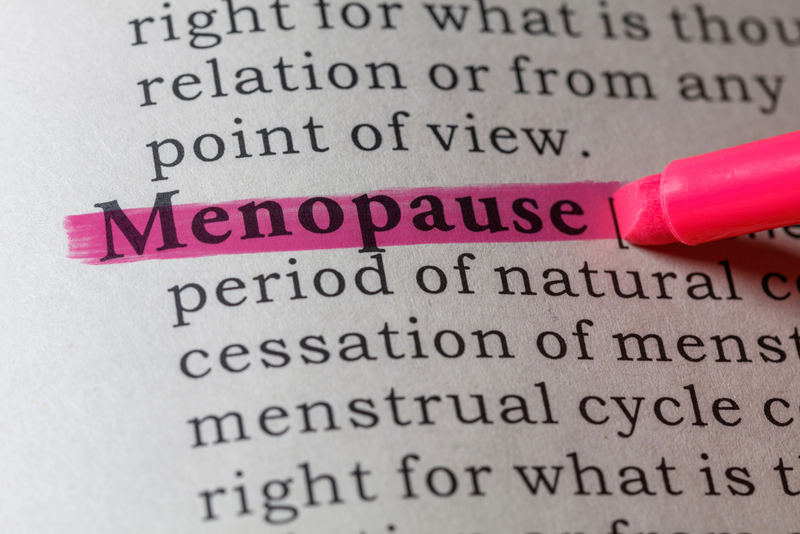News
The Science Behind Food, Sleep, and Muscle Mass with Dr. Melissa O'Meara

My name is Melissa O’Meara, I am a primary care internal medicine physician at Colorado Mountain Medical. In this article, I want to explore and explain the science behind three critical aspects of women’s health: nutrition, sleep, and hormonal changes over time. Each of these elements play a crucial part in maintaining vitality throughout our lives. Let’s dive into how we can optimize these areas for better health.
Food is Fuel: The Science of Nutrition
Let’s start with the basics: food is fuel. Our bodies are complex biochemical systems that require specific nutrients to function properly. The choices we make about what we eat can have a profound impact on our overall health. To thrive, it’s essential to focus on a balanced diet rich in vegetables and protein.When we talk about macronutrients, there’s a common guideline you might be familiar with: about 25% of your caloric intake should come from carbohydrates, and the other 75% should be split between fats and proteins. This guideline is based on understanding how these macronutrients affect our metabolism and energy. Let’s get technical here for a minute. Carbohydrates are broken down into glucose, which is used for quick energy. However, too much glucose can flood our energy receptors and can lead to insulin resistance. Proteins and fats provide sustained energy. But here's an interesting twist—hormonal changes can influence how we metabolize these macronutrients. Estrogen is not just a “sex hormone”. We know that it plays a major role in glucose homeostasis. “Glucose homeostasis” is the “Goldilocks” process that keeps your blood sugar at just the right level—not too much, not too little, but just right. The body, especially the heart and the brain, run on glucose. Our bodies are designed to preferentially burn glucose. But when there is too much sugar around, we store the extra as adipose tissue, or fat cells. Newer studies are suggesting that decreased estrogen production inhibits our metabolism of glucose, leaving more of it in the blood1. Extra sugar in the blood can lead to insulin resistance and more adipose tissue storage. This is part of why many women experience weight gain in menopause—their diet didn’t change, but their body did. Some women experiencing menopause might find that a diet higher in healthy fats and proteins can help manage menopausal symptoms better than one with a lot of carbs. A lower carbohydrate diet can improve insulin sensitivity and reduce the risk of metabolic syndromes.
I say “some women” because it’s important to note that individual bodies respond very differently. We’re all unique, and so are our dietary needs. Bodies are as different on the inside as our faces are on the outside. This is why the “diet wars” can be so maddening—each new diet preaches “the one right way” to eat. What we really need is to pay attention to how different foods make you feel and adjust your diet accordingly. Carbs are the perfect example of this. They can be treated like a nutritional boogeyman. But we have highly active women in this valley! You need carbs to run a marathon or bike Vail Pass. We know this! It’s intuitive that you’re going to pasta load the night before hiking a 14er, but probably not for a day spent lying out at the pool. So, when I recommend reducing carbohydrate intake to help with hormonal balance, I try to be specific that I’m talking about “non-nutritional carbs” like sugar and alcohol.
Both sugar and alcohol can disrupt hormone balance and contribute to weight gain. Excessive sugar intake is linked to increased inflammation, increased cortisol production, and insulin resistance. Alcohol disrupts glucose metabolism and alters a whole series of hormones, including those that regulate appetite and sleep. That’s right, sleep. These things are all connected. Your choices for fuel affect not only weight gain and metabolic conditions, but can also be part of the reason why sleep is such a struggle.
Sleep: The Science of ZZZs
Let’s talk about sleep for a little bit. Quality sleep is essential for physical health and emotional wellbeing. It’s like the VIP section of health—get it right, and everything else falls into place.Our bodies have internal clocks, or circadian rhythms, that regulate sleep-wake cycles. Disrupting these rhythms can lead to poor sleep quality. Many metabolic disorders and cardiovascular diseases have their origins in poor sleep.
Sleep is also an important component of mental health. There are many unique challenges for women when it comes to mental health. One of these challenges, is the changes we see to sleep over time. All of us require slightly less sleep as we age, but women can experience a rapid change to their sleep habits. I’m talking about menopause. We know that menopause affects sleep architecture—the structure and pattern of sleep stages. During menopause, women experience more fragmented sleep, shorter REM periods, and more frequent awakenings. More than half of post-menopausal women experience insomnia2.
So how do women improve their sleep? A lot of sleep advice applies equally to all humans. Things like having regular sleep hours, incorporating a wind-down routines before bed, sleeping in a dark room. There are some things have an outsized effect on women. Remember how decreased estrogen levels will let glucose hang out in the blood longer? Glucose gives us energy and keeps us alert. So sugar loads right before bed (such as red wine or desserts) can hang out longer in our blood & make it more difficult to fall asleep. Glucose is also short lived; it leaves the bloods stream in 2-4 hours. Which means that it can be difficult to stay asleep as it departs. One tip to try is to avoid sugar before bed, but have a protein rich snack to help stay asleep.
Some night-time awakenings have to do with hormonal changes. Decreased estrogen can disrupt the body’s ability to maintain a stable body temperature. Hot flashes can disrupt restorative deep sleep, which can cause daytime fatigue and irritability. The solution here is to control temperature while you sleep. This is an area where I find that women really must advocate for themselves. Many women suffer through their insomnia because they don’t want to inconvenience their bed partner. Protect your sleep! Get that room fan! Use the cooling pads! Sleep with the windows open in February!
I know I’ve made decreasing estrogen out to sound like a terror. It changes your metabolism! It keeps you from sleeping! You might be thinking, what can I do to minimize all this estrogen related disruption? Good news—you’re probably already doing it. Muscles are the best regulator of the hormones that influence sleep and metabolism.
Muscle Mass: The Science of Strength
Which brings us to the last area that I want to talk about. The importance of maintaining muscle mass. Bear with me; I know it feels like we’ve been all over the place. This is the one that I want you to take to heart: the more you do, the more you can do for longer. Increasing muscle mass is not just about aesthetics; it’s about staying healthy and feeling good.Most women are familiar with the benefits of muscle mass in combating osteoporosis. Weightlifting increases bone density by stimulating osteoblasts, the cells that build bone in response to stress. We worry about osteoporosis because hip and vertebral fractures can lead down a path of fragility, which limits a person’s mobility and quality of life. Women are at particular risk for osteoporosis because of the rapid loss of estrogen during menopause. Studies show that weight-bearing exercises can improve bone strength and reduce the risk of osteoporosis-related fractures. This is old news, all the way back to ankle weights and speed walking.
What is new to women’s health is our developing understanding of the role muscle tissue plays in metabolic regulation. Increased muscle mass improves insulin sensitivity, thereby reducing the risk of type 2 diabetes. This becomes particularly important around menopause, as lower levels of estrogen leave sugar in the blood stream for longer. Increasing muscle mass as estrogen decreases can help remove that sugar from the blood stream. It can also avoid some of the weight redistribution seen in menopause. As estrogen levels decrease, women go from a gynoid adipose distribution—mostly in the breast, hips, and thighs—to an android distribution—primarily around the stomach. Muscles release hormones that help regulate both the amount and distribution of fat cells. So it turns out that weight lifting—with heavy weights—is the best exercise to help with that annoying menopause middle section.
Skeletal muscle also plays an important role in heart health. Higher levels of muscle density are associated with lower levels of LDL, or “bad cholesterol” and higher levels of HDL, or “good cholesterol”. In one study, folks were twice as likely to have elevated triglycerides if they were in the bottom quartile of muscle mass3. Muscle mass even plays a role in controlling menopausal symptoms. The SWAN study, Study of Women’s Health Across the Nation, was a large cohort study showing an inverse relationship between lean body mass and vasomotor symptoms of menopause4. Basically, the more you lift, the fewer hot flashes you get. We’ve come to realize that strength training plays a major role in women’s preventive health.
So there you have it—fuel up with the right food, get your sleep on track, and keep those muscles strong. Easier to said then done, right? But the biggest message that I want you to take away is that you don’t have to figure this all out on your own. Your health is as unique as you are, and you should have an individualized plan. You are the captain of your own ship, and there are so many resources at Vail Health, Colorado Mountain Medical and Howard Head Sports Medicine to support you.
Sources:
- Alemany M. Estrogens and the regulation of glucose metabolism. World J Diabetes. 2021 Oct 15;12(10):1622-1654. doi: 10.4239/wjd.v12.i10.1622. PMID: 34754368; PMCID: PMC8554369.
- Hachul H, Hachul de Campos B, Lucena L, Tufik S. Sleep During Menopause. Sleep Med Clin. 2023 Dec;18(4):423-433. doi: 10.1016/j.jsmc.2023.06.004. Epub 2023 Jul 16. PMID: 38501515.
- Vella CA, Nelson MC, Unkart JT, Miljkovic I, Allison MA. Skeletal muscle area and density are associated with lipid and lipoprotein cholesterol levels: The Multi-Ethnic Study of Atherosclerosis. J Clin Lipidol. 2020 Jan-Feb;14(1):143-153. doi: 10.1016/j.jacl.2020.01.002. Epub 2020 Jan 13. PMID: 32061531; PMCID: PMC7085431.
- Woods, R., Hess, R., Biddington, C. et al. Association of lean body mass to menopausal symptoms: The Study of Women's Health Across the Nation. womens midlife health 6, 10 (2020). https://doi.org/10.1186/s40695-020-00058-9
Related to Women's Wellness
-
More

Fitness Tips for Women as You Age with Kristyn Spillane
Notes from Kristyn Spillane's discussion on bone health, muscle loss and the health benefits of fitness for women as you age.
-
More

Navigating Women's Behavioral Health with Dr. Paige Baker-Braxton
Notes from Dr. Paige Baker-Braxton's presentation on women's behavioral health. Dr. Baker-Braxton's discussion provides education on women's behavioral health trends, susceptibilities and strategies.
-
More

The Details and Challenges of Menopause with Dr. Laura Boyer
Notes from Dr. Laura Boyer's presentation on menopause. Dr. Boyer's discussion provides education on what menopause and perimenopause is, why you should talk with your doctor about your symptoms, and what treatment options are available.
